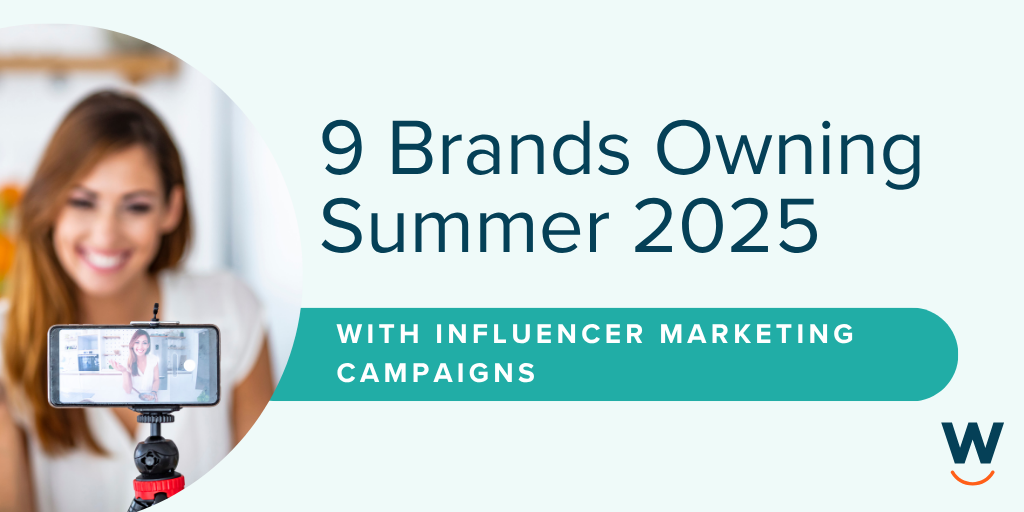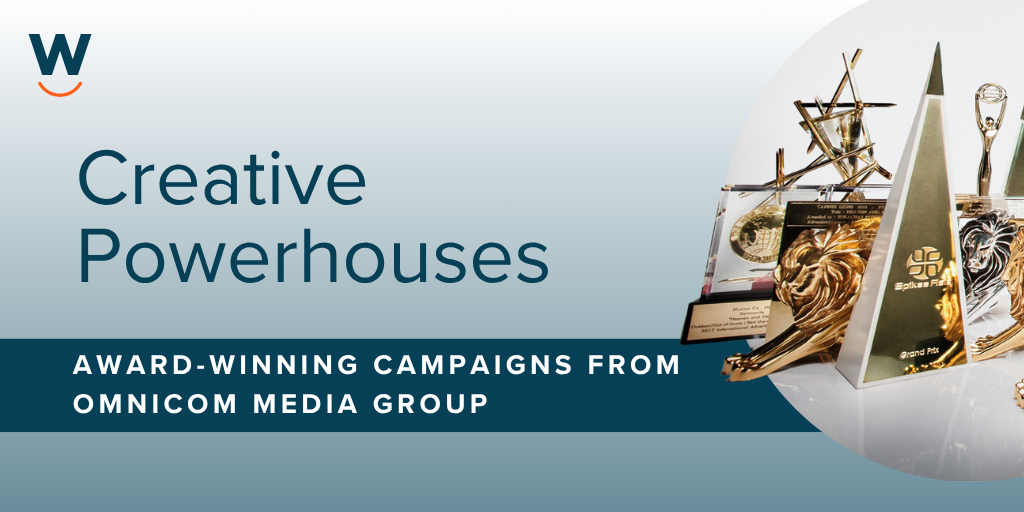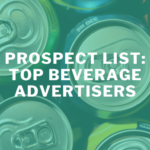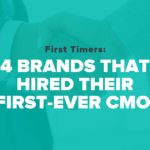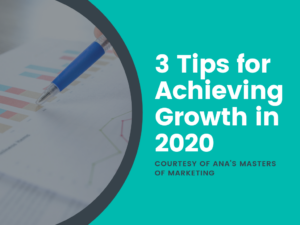
3 Tips for Achieving Growth in 2020, Courtesy of ANA’s Masters of Marketing
This year’s ANA Masters of Marketing conference kicked off with Bob Liodice celebrating big news – that the Fortune 500 brands had finally hit growth in 2018!
He then posed the question to the group, “How can we institutionalize that growth so it’s not a one-time thing, but something we can recognize over the next three years?” Liodice then announced a lofty group goal of achieving $500B in incremental sales over the next three years.
In the days that followed tactics around how to achieve growth was at the top of every presentation. No surprise, right? What was different however was how brands were talking about getting there, this time through intentional and thoughtful work. Sure, we as marketers can increase sales and drive growth a variety of different ways, but can we do that while also doing good in the world at the same time?
The answer seemed to be YES, and as each CMO presenter took the stage there seemed to be similar themes on how to get there. Take a look:
Humanity for Growth
If you were to ask me what the number one takeaway from the event was, this would be it. On the first day Liodice asked the group, “If not us, who; if not now, when?” If we’re going to drive growth, let’s bring America and the world along with us. By expanding our brand’s growth, we also have a unique opportunity to expand our brand’s world view.
A lot of brands decided to take risks in 2018 and found unique ways to insert themselves into global conversations that aligned with their brand mission and core values. Marc Pritchard asked, “Where does it make the most sense for your brand to enter the conversation?” Pritchard followed by presenting P&G’s 5-year plan, highlighting Reinventing Brand Citizenship as one of their five goals. They believe their brands can be a force for good in the world, and then in return become a force for growth. Customers today want to know what brands believe in and are buying based on those shared beliefs. Pritchard went on to say, “By entering into these conversations you’re able to lead change and eliminate bias.”
Within this topic, inclusivity absolutely came up. Brands are more intentional than ever when it comes to gender and ethnicity awareness and equality. In fact, last year I mentioned the ANA CMO Masters Circle introduced GEM™ which is a gender equality measurement for all advertisement. It measures unconscious bias in ads and in its first year has tested almost 60,000 ads and the results have been impressive:

- Ads with positive GEM™ scores drive purchase intent by 26 percent among all consumers; 45 percent among women.
- Ads with positive GEM™ scores increase brand reputation by 11 percent.
- Ads that portray women accurately work better when paired with programming that also portrays women and girls realistically.
Other brands who deserve a round of applause for being inclusive would be Target. CMO Rick Gomez talked about their XXO design line, introducing designer clothing for all income levels as well as their adaptive Halloween costumes designed for children with special needs.
Be Customer-Centric & Don’t Fake It
Have you ever heard of a customer safari? Neither did I until the conference.

Anheuser-Busch’s CMO Marcel Marcondes shared this image in his presentation and said this was how his team was collecting customer data before he came on board. So often as marketers, this is exactly what we do, “Oh, look a user logged in” or “Oh wow, they referred a friend.” Sure, behavior data is easy for us to get our hands on as marketers but what if we got closer, what if we did better? What if we got out of the jeep, set down the binoculars and had a real conversation with our customers?
Maybe then we could really find out what’s important to them and how our brands can best align with them. “It’s all a game of relevance,” Marcondes said, “People won’t pay attention to us if we don’t pay attention to them first.”
Someone else who had a stellar presentation was CMO of Ally Bank, Andrea Brimmer. She came right out of the gate saying, “Don’t say you are customer-centric if you’re not serious about it!” Ally Bank had made some big strides in the last year and by using their ‘brand as a weapon’ and really leaned into being a customer-centric organization. They put their money where their mouth was and launched a campaign during the holidays called Banksgiving, and they put $800,000 in the hands of their customer support team to, at their will, disperse that money to clients in ways (and amounts) they thought would be most beneficial. After watching their ad campaign let’s just say I saw a few grown men crying around me. #tearjerker
Be Brave & Take Risks
Taking risks in marketing isn’t as easy as some may think. From the approval process and internal buy-in, a lot of creative and innovative ideas can easily get nixed, and quickly. This year it seemed as if more brands were taking bigger risks. They were the first to admit they didn’t always work out, but for the ones that did – it made huge lifts in their brand awareness and sales.
Marc Pritchard specifically talked about Constructive Disruption in his presentation, encouraging us to disrupt in ways that can create value AND drive growth. At P&G they took risks by launching infomercials this past year. You heard that right – infomercials. They realized a lot of their customers didn’t understand HOW to best use their products, so the infomercial campaigns did just that while also significantly increasing their sales at the same time.
Just because you think something is taboo doesn’t mean you can’t make it work for your brand and your audience.
He also encouraged everyone in the room to give themselves permission to take risks. Wow-what a great concept, right? P&G has been turning the ship around over the past 5 years as they redefine their growth strategy. One thing they’ve done as part of their constructive disruption was studying tech startups in Silicone Valley to see where their CPG brands could operate more efficiently, and wow did it pay off for them!

Out of all the brands who presented I’d have to say Buffalo Wild Wings was one that really pushed the limits and had it pay off in the end. After years of unconsciously getting away from their core positioning and primary audience they realized it was time to go back and pay homage to the committed, crazy yet enthusiastic sports fan! Partnering with The Martin Agency, CMO Seth Freeman found ways to engage with their male-heavy demographic, particularly by launching their campaign Death to Domestication and introducing the jewel stool.
Yep, that’s a true story. Talk about taking risks. But it paid off for them and in big ways, bringing the hungry, fired-up male back into their restaurants.
As Freeman wrapped his presentation, he simply asked the audience, “What do you stand for, but more importantly what do you stand against? For them, it was the domestication of sports fans.
One of the last presenters of the conference and another brand taking big risks the past year was Oatly. They were the only brand to stand on stage who didn’t have a CMO. In fact, they didn’t even have a marketing team…and that was intentional.
Instead, they had been able to capture their ever-growing market share via one internal creative director and a passionate team of employees. 
When starting their company, Oatly knew consumers would think a milk-type product produced by oats would be let’s say, be hard to imagine. They humbly leaned into these perceptions and weren’t afraid to call themselves out publicly, with some of their packaging even saying “This tastes like sh**” on the carton itself!
They understood the lactose intolerant trend ahead of them and strategically started courting boutique coffee shops just as Lululemon plied yoga instructors with free leggings not too long ago. Their targeting paired with their bold advertising campaigns and positioning quickly caught fire and they’re currently in a hyper-growth stage now. As their General Manager, Mike Messersmith was ending his presentation he eloquently said, “Average work is an output of decisions grounded by fear.” #preach
In summary, as marketers, we have a multitude of channels, technologies, and partners to help us achieve growth. As we plan for 2020 and beyond let’s bring humanity alongside our growth, let’s be customer-centric (and not fake it) and let’s give ourselves permission to take risks and achieve great rewards.


